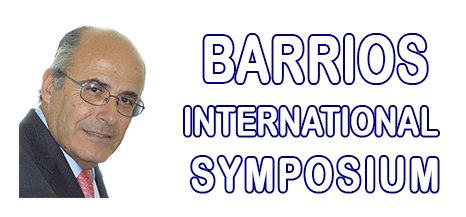ORAL
| SESSION: AdvancedMaterialsMonAM-R6 | Marquis International Symposium on New and Advanced Materials and Technologies for Energy, Environment and Sustainable Development(3rd Intl Symp. on New and Advanced Materials and Technologies for Energy, Environment and Sustainable Development) |
| Mon Oct, 23 2017 | Room: Condesa IA |
| Session Chairs: Jan Seidel; S. Ravi P. Silva; Session Monitor: TBA |
11:00: [AdvancedMaterialsMonAM01] Plenary
Carbon Electronics for the 21st Century S. Ravi P.
Silva1 ;
1University of Surrey, Guildford, United Kingdom (Great Britain);
Paper Id: 204
[Abstract] Carbon as a material can have many faces and phases! It can bond to itself, and other elements, creating a plethora of material types. This allows structures based on this material to have different personalities, or even split-personalities. The ability to functionalize and solubilize carbons lends further versatility to this material system and allows for the development of multi-functional platforms. A better understanding of the synthesis, particularly over large areas, has enabled bottom-up design of nano-carbon films, from self-assembled structures to designer arrays. Coupled with the discoveries of fullerenes, nanotubes and graphene, this has led to a renaissance in the study of carbon as an electronic material.
Within this talk, we will develop two themes based on the scale-up of nano-dimension structures to form large area material platforms. We will first discuss how large area low-temperature growth of nano-carbons, including carbon nanotubes, can be applied to CMOS-type electronic applications, and how this technology can be further extended to the wonder material of the 21st century, graphene. A novel photo-thermal chemical vapor deposition (PT-CVD) route for the CVD growth of nano-carbons, including CNT and graphene, will be discussed. Further, we examine how different allotropes of nano-carbons can be combined to produce large area, solution processable �inorganics-in-organics� hybrids that are key to 4th Generation (4G) solar cell devices.
The electrical versatility and structural integrity of hybrid nano-carbons allow a new generation of multi-functional materials to be designed with light-matter interactions and large area electronic backplanes for sustainable technologies. The potential for future nano-carbon based electronic devices are numerous and significant, but so too are the technical and engineering challenges that need to be overcome. It needs multi-disciplinary teams of scientists and engineers to realize the full potential of this unique material and find solutions to the grand challenges of humanity.







